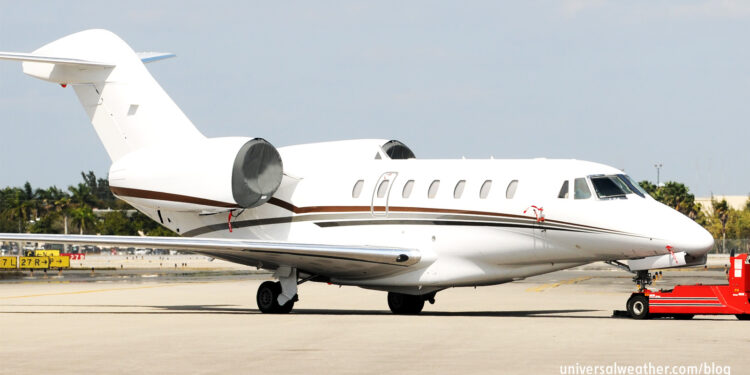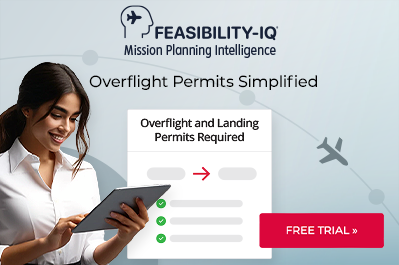Business Aircraft Ops to India: Ground Handling

This business aviation blog post is part of a series on operating in India and continues from our last article: “Business Aircraft Ops to India: Airport Operations.”
The General Aviation (GA) ground handling and regulatory experience in India has improved over recent years, and the process has become more user-friendly. For example, even lead time requirements for operations to military airfields have reduced to as little as half the time it used to take just a few years ago.
The following is an overview of what you need to know:
1. Requesting ground handling
For regular ground handling requests, six hours’ notice is recommended. Short-notice and emergency handling requests, however, can always be accommodated. Information that needs to be provided with your request includes full schedule, operator information, landing permit details, and all aircraft services needed.
2. Ground handling considerations
While private non-revenue and charter (non-scheduled commercial) flights are handled in the same manner, with a similar request procedure, wide-body and larger GA equipment is handled somewhat differently. Depending on the size of the aircraft and the particular airport, it may be necessary to reposition some Ground Service Equipment (GSE) to accommodate the services needed for the aircraft. This may involve additional lead time, and there will be costs to consider.
3. Ground handling process
Once a handler receives your request, he or she will communicate with airport authorities; Customs, Immigration, and Quarantine (CIQ); fuelers; and 4th-party service providers including in-flight caterers and local transport suppliers to begin setting up all required services/support. If you’re operating to a smaller domestic airport, you may want to consider bringing in a supervisory handler, from a larger airport in the area, to help ensure that all services/handling support materialize on time and as requested. Always pay close attention to airport and CIQ operating hours as many smaller airports have limited hours. Ensure, also, that you’ve made credit arrangements for all local services, fuel uplifts, and airport charges. In some cases you’ll need to make payment in advance, either directly or via a 3rd-party provider, to be sure that all handling requests are confirmed.
4. Schedule changes
If a schedule change is necessary, it’s important to inform your ground handler as soon as possible. Depending on your destination airport, you may need to revise airport slots. Both Delhi (VIDP) and Mumbai (VAAB) frequently have airport slot availability issues, and a reconfirmed slot time – based on a schedule change – may not always be possible.
5. Flight restrictions
Be prepared for local flying restrictions, imposed from time to time and communicated via notice to airmen. This may be the case when a VIP flight, such as a flight with the Indian prime minister, is operating in the area. Your ground handler will notify you of any applicable local flight restrictions in advance.
6. Limited duration stays in India
By regulation GA aircraft may only remain in India up to a maximum of 14 consecutive days. If you wish to stay longer in country, you’ll need to depart India and return.
7. Visas on arrival
At certain airports – including VIDP, VABB, and Kolkata (VECC) – it may be possible to obtain crew visas on arrival. Note, however, that these visas are only valid for up to 72 hours. If you wish to extend your stay beyond 72 hours, your ground handler may be able to negotiate an extension, but there are no guarantees. Our recommendation is that crew members always obtain business visas prior to arrival, to allow maximum operational flexibility. Be aware that, if flight crew members arrive in India on tourist visas, they’ll be in violation of immigration regulations and may or may not be permitted into the country.
8. Curfews and restrictions
Before you operate to India, it’s important to review any curfew or airport operating restrictions with your 3rd-party provider and/or ground handler. For example VABB has a GA ban in effect 0230-0430 UTC and 1200-1400 UTC. At this time India has no Stage II noise restrictions in effect.
9. Military airports
Lead time for military airport landing permits usually runs 15 to 20 business days. For these operations you’ll need landing permits from both the Civil Aviation Authority (CAA) and military authorities. Popular military airfields for GA include Agra (VIAG), Vishakhapatnam (VOVZ), Port Blair (VOPB), Baghdogra (VEBD), Pathankot (VIPK), Chandigarh (VICG), and Goa (VOGO). Be mindful that there may be limited GSE availability at these locations. Your ground handler may need to have certain types of GSE brought in to your location, so it’s best that you communicate with your 3rd-party provider about such needs.
10. Cabotage considerations
Be mindful that cabotage is an issue in India. The CAA approves landing permits based on crew and passenger information provided. Once a permit is approved, it can be difficult to make changes to it. Do not assume you can pick up and drop off additional passengers within the country. Airport authorities, at the time you file your flight plan, will check crew and passenger count against your approved permit. While it’s not an issue to take off with fewer passengers onboard, any additional passengers beyond the number listed on your permit may trigger cabotage concerns.
11. Additional reading: Business Aircraft Ops to India – Series Index
Note: Links will be updated as articles are published.
- Part 1 – Airport options
- Part 2 – Airport operations
- Part 3 – Ground handling
- Part 4 – Additional services and operating costs
- Part 5 – Fuel and security
- Part 6 – CIQ
- Part 7 – Permit considerations
- Part 8 – Slots and military operations
- Part 9 – Flight planning
- Part 10 – Weather and additional flight planning information
- Part 11 – Hotel and local area
Conclusion
Be aware of the ground handling requirements and limitations depending on the airport you travel to. Each airport may have different restrictions, so it’s best to communicate with your 3rd-party provider. Note that travel to military airports may have limited GSE or other services available for your flight. Also, as cabotage regulations are stringent in India, it’s always best that you confirm what is and is not possible should you wish to fly personnel, who did not arrive with you to India, point to point within the country.
Later, we’ll discuss operating costs and additional services for India and their impact on your trip.
Questions?
If you have any questions about this article or would like assistance planning your next trip to India, contact Christine Vamvakas at christinevamvakas@univ-wea.com.




